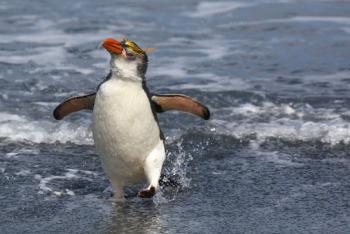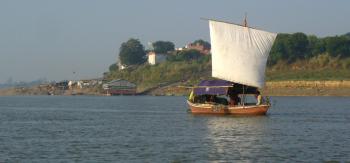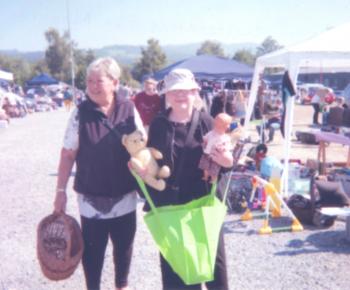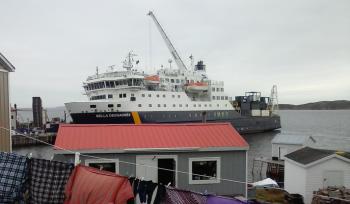‘Experience’ collections – Adventurous pursuits
Patrica McKevlin of Charleston, South Carolina, wrote, “In 2018 I finished viewing all of Johannes Vermeer’s paintings, which I was introduced to in the sixth or seventh grade! It was a difficult challenge, but I had wanted to do it for a very long time. I know some travelers who are counting countries, while others are aiming to visit all the capitals of Europe. I would like to hear what types of experiences other people are ‘collecting’.”
Another ITN subscriber (from Iowa) wrote, “On my next trip to India, among other things, I will ‘get’ my 26th and 27th of the 27 principal hill stations of British India [from the Dane Kennedy list] for my ‘collection.’ I know people who ‘collect’ wineries or visits with different tribal cultural groups, and I’ve crossed paths with people focused on narrow-gauge railroads or golf courses. I’m wondering what other experiences travelers ‘collect’.”
Consequently, we asked ITN subscribers to each write in about any particular type of experience that they seek out, “collect” or hope to complete as a goal. This is the third of (now) five parts.
We are bird-watchers. In the 1980s we went to the Galápagos Islands with borrowed binoculars because Peter wanted to see the Darwin finches. We both were fascinated by watching them up close and observing their behavior. As soon as we returned, we joined our local nature center, participated in some of their bird walks and discovered that the center frequently offered birding trips to foreign countries.
Our first trip with them was to Belize, where we saw a number of new birds. The veteran bird-watchers told us we had to keep a life list, that is, write down every bird we saw on every trip. We weren’t so much for listing, but they said we would regret it later, so we started.
In those days, there was a huge Cornell-published book listing all the birds of the world, and we duly started checking them off. Luckily, not too long into our new hobby, bird-listing software arrived that made it easy. The software keeps track of the number of birds that you have seen by location.
We decided that when checking off birds on the software, we would always do our listing with a glass of champagne in hand, so, whether it’s just 10 birds in a park in Paris or 630 after four weeks in Kenya, we open the champagne and spend a pleasant evening on our return adding the names to our list.
After Belize, we were off and running, traveling to remote countries to do the most difficult birding while we were young and firm and able to hike those recently cut trails as well as tolerate a lot of tropical heat and humidity. We started traveling with Victor Emanuel Nature Tours (Austin, TX; 800/328-8368 or 512/328-5221, ventbird.com), which offers birding tours led by top birding guides, some of them leading ornithologists, to many countries of the world.
After some years of this hobby, we set ourselves the goal of seeing half of the world’s birds. There are approximately 10,000 species! On March 15, 2009, we made our goal as we saw, in Seychelles, the Aldabra white-throated rail, a small wetlands ground bird, while on a Victor Emanuel tour. The company had chartered a small cruise ship for a birding tour of the islands. For 12 days, 56 participants enjoyed birding and snorkeling.
We still “collect” birds but, since we are in our 80s, have switched to more cultural trips. Hiking up hills in Papua New Guinea or sleeping without air-conditioning in the Amazon jungle is less appealing now.
Linda & Peter Beuret
Santa Barbara, CA
My “experience collection” was to photograph all of the world’s penguin species in their native habitats, but I didn’t start with that goal.
I started my travels by visiting Antarctica and the Arctic to see places that were going to be most impacted by climate change, before they changed. However, after one trip to Antarctica, I decided I needed to see more penguin species.
During the first trip to Antarctica, I saw gentoo, Adélie, chinstrap and emperor penguins. I also visited the Galápagos Islands and saw the Galápagos penguin. At that point, I hadn’t yet decided to see all the penguin species, but after I took a trip to the sub-Antarctic islands of New Zealand plus Macquarie Island in Australia — where I saw Snares crested, yellow-eyed, eastern rockhopper, royal and erect-crested penguins — I was hooked.
I needed another trip to New Zealand to see the little blue and the Fiordland crested penguins. Seeing the Fiordland crested was a challenge and expensive because it required visits to both Doubtful Sound and Milford Sound to be sure I saw at least one. (I saw two, one in each sound.)
On my first trip to South Georgia, one of my cameras wasn’t working, but I didn’t know it, so I had to go back (not that I minded) to photograph macaroni penguins. On South Georgia, I spent an entire day in a colony of 600,000 pairs of king penguins — an amazing experience. When you sit down, the penguins will walk right up to you. (You do need to become accustomed to the smell of a penguin colony.)
I saw South African penguins near Cape Town, and on the Falkland Islands I found southern rockhopper and Magellanic penguins. Then I was down to the last two.
The northern rockhopper penguin required a trip up the mid-Atlantic Ridge that stopped at Gough Island and Tristan da Cunha. While we couldn’t land on Gough, we did an excursion by Zodiac raft and I was able to get photos of northern rockhoppers. They really did look different from the other rockhoppers. That was a 5½-week trip with many sea days, but it was worth it to go to those seldom-visited areas.
The Humboldt penguin was my last one. In 2016 I did two back-to-back expedition trips, starting in the Falklands and ending in Guayaquil, Ecuador. Both trips were necessary because, to make sure I saw the birds, I needed to explore their entire range. When we visited the nesting sites, most of the penguins were out at sea. Luckily, a few were still on the rocks.
Those little penguins are tough. We watched two jump off a 100-foot cliff. They mistimed the swell and landed on rocks. I was sure they had killed themselves, but they just popped up and swam off.
In all, I visited Antarctica three times, South Georgia three times, the Falkland Islands multiple times and New Zealand’s sub-Antarctic islands and Macquarie Island twice each. The sub-Antarctic islands of New Zealand are my favorite places because they have many other endemic bird species and unique flora.
Due to my efforts to see all the penguins, I also have seen all 22 species of albatross except two — a great bonus.
Marian Herz
Boise, ID
I am of Chinese descent. My family emigrated from Guangzhou. With the wide diaspora of Chinese people, Chinatowns are located all over the world, and I have been to more than 30 of them.
In 2016 in Cuba, I met an 86-year-old Chinese man in Havana’s Chinatown who spoke my family’s obscure dialect. He had gone to Cuba in the 1950s and had failed to get out when Castro took over.
He told me that, at its height, there were over 20,000 Chinese people in Havana’s Chinatown. There are fewer than 90 left. Having a hard time surviving on his meager pension, he was growing bean sprouts to sell to the two or three restaurants left in Chinatown.
• I am a huge fan of the Olympics (I have attended four), so I also enjoy tracking down Olympic stadiums. I found that Berlin offers the best historical tour, with all the drama surrounding Jesse Owens’ showing up the Nazis.
• Additionally, I have been to 106 countries, so that is my largest collection.
Tony Lee
San Francisco, CA
I hadn’t realized, until I considered this topic, that I collect rivers, not by traveling on large vessels with hundreds of passengers but on something with as much of a local flair as possible.
I have spent time on a small houseboat and on a felucca south of Cairo (and washed my hair in the NILE); ridden on a small expedition ship on the AMAZON, seeing macaws, cacao trees and giant water lily pads; traveled through the Three Gorges on the YANGTZE (before the giant dam was installed); taken a day trip on the exposed deck of a ferry carrying people, produce and bicycles on the Chinese section of the MEKONG; traveled slowly down the GANGES, eating meals on river islands and learning from our oarsman how to make a whistle from a snail shell; paddled in a laughably low-water canoe on the RIO GRANDE; taken a passenger-and-freight ship, Bella Desgagnés, along the lower ST. LAWRENCE from Rimouski to Labrador (and discussed my sewing project with an Innu grandmother); experienced New York Harbor and points north along the HUDSON and the ERIE CANAL, and taken a day cruise on the RHINE long ago, though I don’t travel much in Europe.
I’m next looking forward to some time on the MACKENZIE in the Northwest Territories of Canada (accompanied by mosquito repellent).
Marilyn Jestes
Roulette, PA
When I travel, I have to find local flea markets. The farther away from major tourist cities they are, the better.
As an antique doll and bear collector, I’m always looking for souvenirs of my trips. It’s so much fun to meet the locals and hunt for bargains!
On an independent trip to Switzerland, Sept. 15-22, 2019, I attended the Wetzikon Flea Market (Rappenswilerstrasse 63, Wetzikon, Switzerland; phone +41 79 356 6700). Admission was free. It was an open-air market complete with cows in the field.
I can’t wait for my next trip to find a flea market!
Cindy Tarnoff
Saltillo, MS






